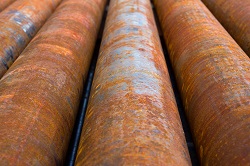Shedding light on photosynthesis
Plants are increasingly the subject of industrial applications, from growing organic mass for use as biofuels, to large-scale production of desirable chemicals such as nutritional supplements and pharmaceuticals. Underlying all these processes is the need to more efficiently convert solar energy into biomass, the focus of the EU-funded SE2B project(opens in new window). This exchange is often downregulated in plants, because while they typically grow to absorb as much light as physically possible, the presence of excess energy can be damaging at a metabolic level.
Excess energy
“Plants have regulation that can switch on to get rid of energy if too much light comes in,” explains Claudia Büchel, project coordinator of SE2B. “That’s physics: they get just as much light as is delivered, it could be too much or too little.” To thrive, plants organise their metabolic pathways around the average quantity of light they expect to receive. Identifying the proteins that control this window, and understanding how they work, could allow us to tweak it so that the plant can work at different rates of light absorption. “If we can override that limitation, we can set better tolerances, and make more efficient growth,” says Büchel. For example, most microalgae are grown in large tanks, where light is difficult to supply evenly. The fluid needs to be stirred constantly to circulate algae, which is expensive. Tweaking the algae to photosynthesise across a broader range of light intensities could reduce these costs.
Search for similarities
Working from Goethe University Frankfurt(opens in new window) in Germany, Büchel led a consortium of 11 organisations, including research groups and commercial firms, to better understand the biological process of photosynthesis. The work covered three levels of complexity, ranging from the analysis of protein structure in light-collecting organelles up to measuring plant phenotypes. Interest was centred around the similarities and differences in those organisms most commonly employed in biotechnological approaches and agriculture, such as cyanobacteria, green algae, diatoms and higher plants. Another key question was how the efficiency of energy transfer from light-harvesting proteins to metabolic processes could be improved. “As a biologist I find it fascinating to see organisms facing the same problems, and evolving balancing mechanisms independently,” adds Büchel. “You always find new things and new ways.”
Published papers
As a result of these studies, says Büchel, “We know now some methods of how to improve these plants, although they need to be tested.” The work will likely find its application in biotechnology industries which use algae to grow chemicals of interest. Some hardware developed or improved during the course of the 4-year investigation has already been commercialised, such as automated plant phenotyping facilities and hyper-resolution light microscopes, with more to follow. This research was undertaken with the support of the Marie Skłodowska-Curie Actions programme(opens in new window). Büchel says this funding helped ‘tremendously’, pointing out that researchers supported by the grant were able to grow their professional networks, and that many found positions in academia or in industry as a result. The group continues to publish findings(opens in new window) from the study, a full list of which is available on the project website.






